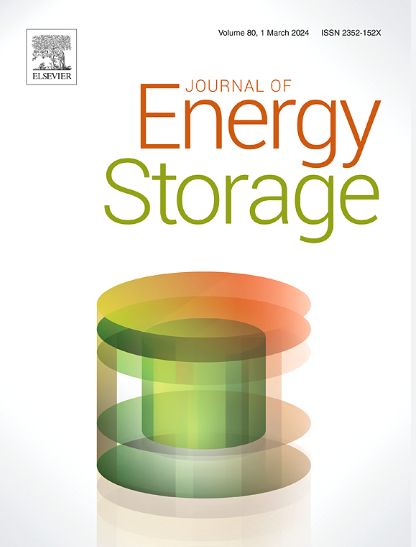采用多孔翅片对不同类型装有PCM的加热梯形腔强制对流熔化的影响及FNN/GNN建模
IF 8.9
2区 工程技术
Q1 ENERGY & FUELS
引用次数: 0
摘要
本文采用数值模拟方法,研究了多孔翅片和不同加热方式对装有相变材料的梯形腔体在强制对流条件下的熔化过程。利用有限元方法探讨了Re(300 ~ 1000)、翅片高度(Lf在0.01H ~ 0.14H之间)、翅片数(N在0 ~ 4之间)、穿孔壳孔数(Nh在1 ~ 8之间)和梯形空腔上壁尺寸(Hp在0.01H ~ 0.75H之间)对流动特性和熔化动力学的影响。观察到,在最大尺寸和最大数量下,翅片的安装对熔化过程非常有效。与未穿孔的情况相比,穿孔翅片在熔化过程中几乎产生相同的性能,但每个翅片的体积可减少42.85%。在Re = 1000时,翅片结构使熔化率提高了21.6%。与单翅片相比,四翅片的熔化性能提高了37.8%。当翅片长度从Lf=0.1H增加到Lf=0.14H时,熔体分数提高18.9%。当N=1时,当内部部件的所有侧面都加热时,熔化性能比单侧加热时提高8.2%。与不带翅片且使用基液的方形空腔相比,在带有纳米流体的梯形空腔中穿孔翅片的熔化速度提高了40.6%。采用前馈网络(FFN)和广义神经网络(GNN)成功地估计了熔化过程的动力学。本文章由计算机程序翻译,如有差异,请以英文原文为准。
Effects of using perforated fins on the melting in different type heated trapezoidal cavity equipped with encapsulated PCM during forced convection and modeling with FNN/GNN
In the present study, melting process in a trapezoidal cavity equipped with encapsulated phase change materials (PCMs) under the combined impacts of using perforated fins and different heating types is numerically explored during forced convection. Effects of Re (between 300 and 1000), fin height ( between and ), fin number ( between 0 and 4), number of holes in the perforated case ( between 1 and 8), and size of the trapezoidal cavity upper wall ( between and ) on the flow features and melting dynamics are explored by using finite element method. It is observed that installation of the fins is very effective on the melting process at the highest size and highest number. As compared to non-perforated case, perforated fins produces almost the same performance in the melting process but volume per fin can be reduced up to 42.85%. At Re = 1000, finned configuration improves melting by 21.6%. As compared to one fin case, melting performance improves by 37.8% with four fins. The improvement in the melt fraction is 18.9% when the fin length is increased from to . The melting performance improvement is 8.2% higher when all sides of the inner part are heated as compared to one side heating case for . Perforated fins in the trapezoidal cavity with nanofluid improve the melting process by 40.6% when compared to a square cavity without fins and using base fluid. Feed forward networks (FFN) and generalized neural networks (GNN) are used to successfully estimate the dynamics of the melting process.
求助全文
通过发布文献求助,成功后即可免费获取论文全文。
去求助
来源期刊

Journal of energy storage
Energy-Renewable Energy, Sustainability and the Environment
CiteScore
11.80
自引率
24.50%
发文量
2262
审稿时长
69 days
期刊介绍:
Journal of energy storage focusses on all aspects of energy storage, in particular systems integration, electric grid integration, modelling and analysis, novel energy storage technologies, sizing and management strategies, business models for operation of storage systems and energy storage developments worldwide.
 求助内容:
求助内容: 应助结果提醒方式:
应助结果提醒方式:


